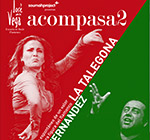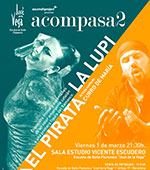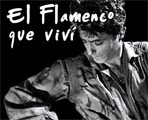|
LOS VERANOS DEL CORRAL 2011. 3ª semana |
|
Text and photos: Antonio Conde When we’ve reached the halfway point of “Los Veranos del Corral”, a swirl of artists have already passed through. And I say swirl because of the staging and style. Four days in which the main idea of each one has been the polished superb development of their dancing. The thing is, at this venue, for this audience, extraneous elements are not needed, because in this setting they could only make for a less satisfactory aesthetic. For this reason the majority of those who appeared used no decorative elements to defend their classicism, and a kind of dance that is a common denominator.
The first day of the week was for María Canea from Huelva. Accompanied by singers Javier Rivera and Jeromo Segura, and guitarist Juan Campallo, her style had people enthralled from the first moment. Her dancing is perfectly defined, she attacked the opening siguiriyas with gusto, although some initial nervousness kept her from expressing herself despite communicating great strength. Her technique is excellent, although she seems at times to depend too heavily on it, in particular with her footwork. She makes the most of the bata de cola coordinating perfectly with a shawl, making her dancing all the more attractive. For alegrías, the duo Rivera/Segura sang together, sweetening the aesthetic output of the cante and proving not everything has been invented yet. The last number was soleá. The concept on which it was based had a technical dimension above all else. The dramatic bulerías endings, although coherent were repetitious, which didn’t however keep the audience from applauding wildly. With bells on his wrists and boots, that’s how David Coria came on stage. Dressed like a field worker with sounds of the country, with work songs to match. The choreography was simple but beautiful, with the voices of Antonio Campos and Juan José Amador. After the rondeña of Víctor El Tomate and Juan Jiménez, the bells disappear and we get into alegrías. The concept is similar to that of the previous day. Engrossing from beginning to end, with barely a moment of silence. Juan José Amador did a cante solo of abandolao with a bulerías feel, and a little too much harmony on the part of the guitar, so fashionable these days. The rest was Coria with his tonás and siguiriyas. The scene is repeated. From less to more, it all becomes footwork by the Seville dancer. The fiesta finale was tanguillo (with the special collaboration of Campos), and here you could see the difference between his dancing and his intentions.
The excessive percussion was the constant annoyance throughout the night. Catalonian Nacho Blanco has enough interior compás and command of his body to be able to do without a cajón. As I’ve said many times, this stage ought not to have percussion. The inclusion of the cajón in the hands of José de Mode obsessively undid the good work of Blanco. Nacho was nervous after hearing the guitar introduction of rumba by Eduardo Cortés which soon became farruca. Nacho is strong, his feet are astonishing, measured and clean at every moment. Bulerías, fandangos por bulerías and jaleos in the rough voice of Fabiola who made poor use of singing without amplification at inopportune moments. The carcelera of Zambullo is the beginning of the tonás in the Agujeta line, and it all turns into seguiriyas for Nacho. Although tense, he relaxes as he gets into what he’s doing. Elegant in every gesture, exquisite compás, instinctive and visceral. Bulerías that recalls the maestro of maestros (Paco de Lucía) and the occasional reference to Vicente Amigo in some falsetas. The ending of the soleá por bulería seemed to be going well, but ended with illogical contortions and endless heelwork that, despite everything, was what grabbed people the most.
And Granada could not be absent from this dance series. The door opened for two young dancers, Agustín Barajas and Rai Benítez. Both studied at Mariquilla’s dance school, and that’s a point in their favor. The wise Granada dancer is behind them and you can tell in every movement. The backup was Luis Mariano on guitar, and Juan Ángel Tirado and Manuel Heredia singing, with the percussion of El Moreno. Barajas begins with farruca. Very accelerated, he gradually calms down. His arms are masculine which demonstrates that the Sacromonte school of dance has the virtue of being able to express a variety of dance languages. Rai Benítez interprets taranto and tangos. He’s pure energy, an explosion that molds each heel and toe movement. Tirado and Heredia get the audience in the palm of their hands with some jaleos, what great singing. Juan Ángel ought to wake up from his lethargy and face the fact that he’s one of the best singers of the moment. With soleá, Agustín again based everything on his footwork, overlooking everything else. Volcanic from start to finish, he was missing the repose required by soleá. To cling obsessively to percussive strength with no apparent measure in the feet, only serves to eliminate what is done with the rest of his body. An incomprehensible ending, overloaded with reiterative compás kept him from exhibiting his virtues.
|
Descubre más desde Revista DeFlamenco.com
Suscríbete y recibe las últimas entradas en tu correo electrónico.
































